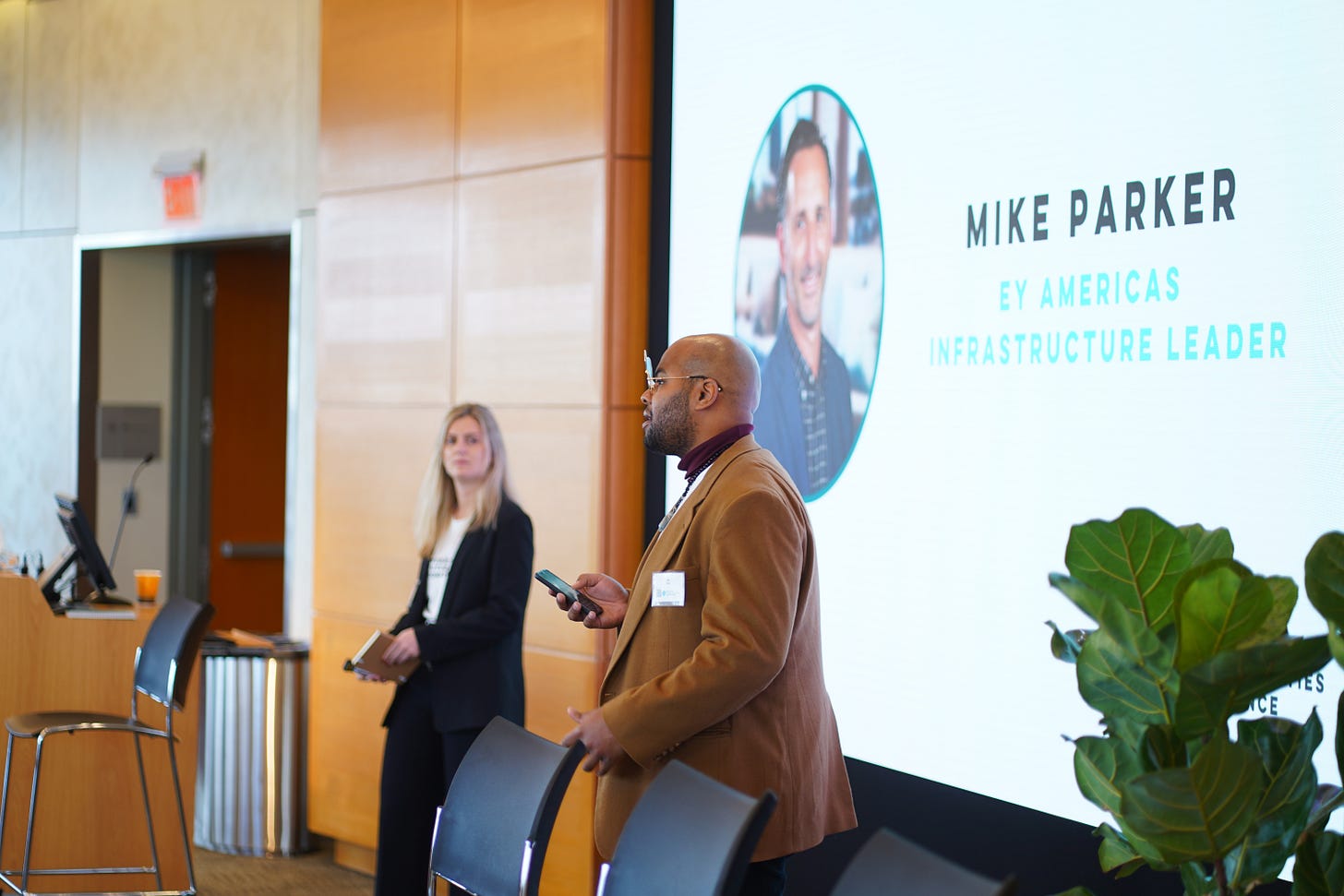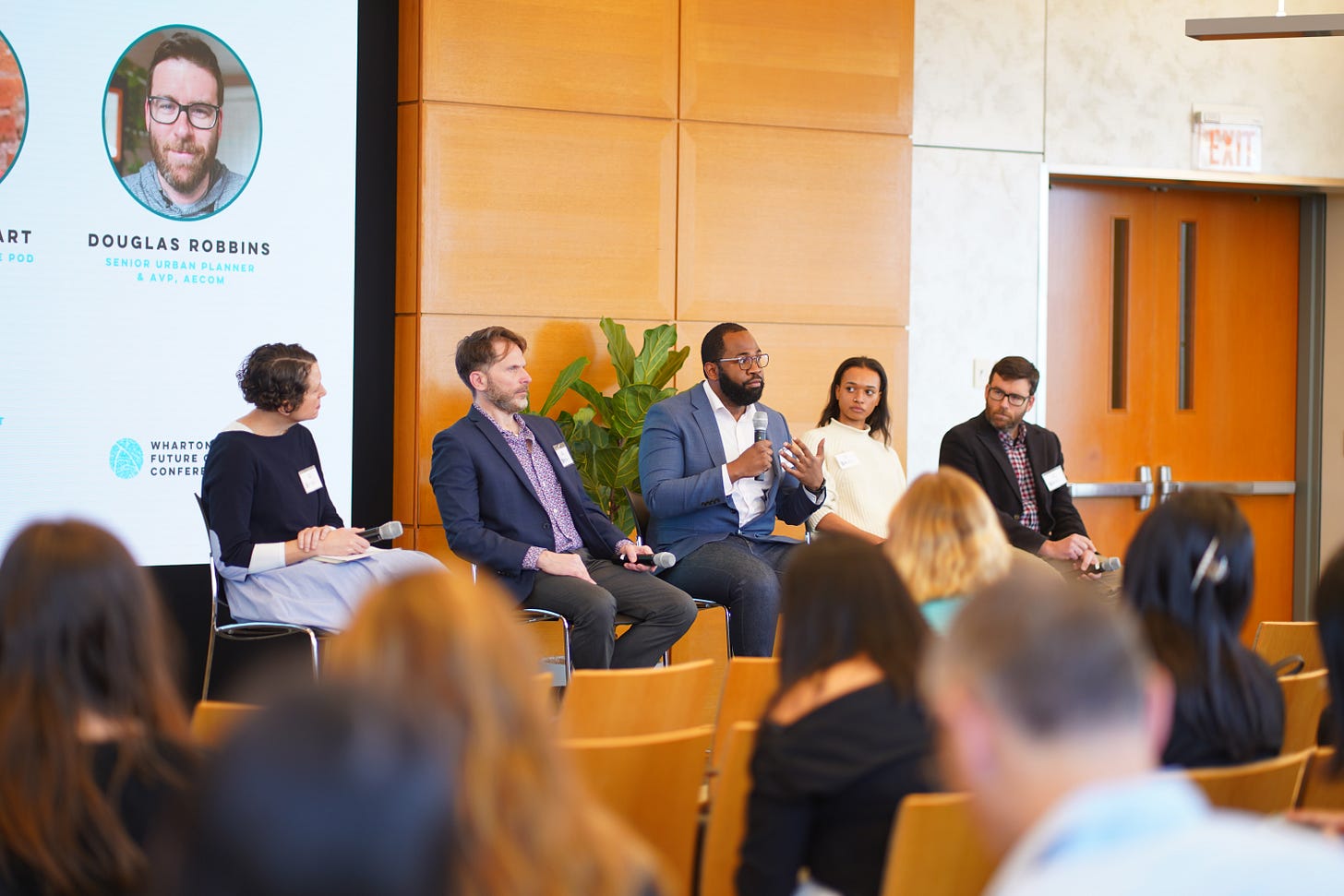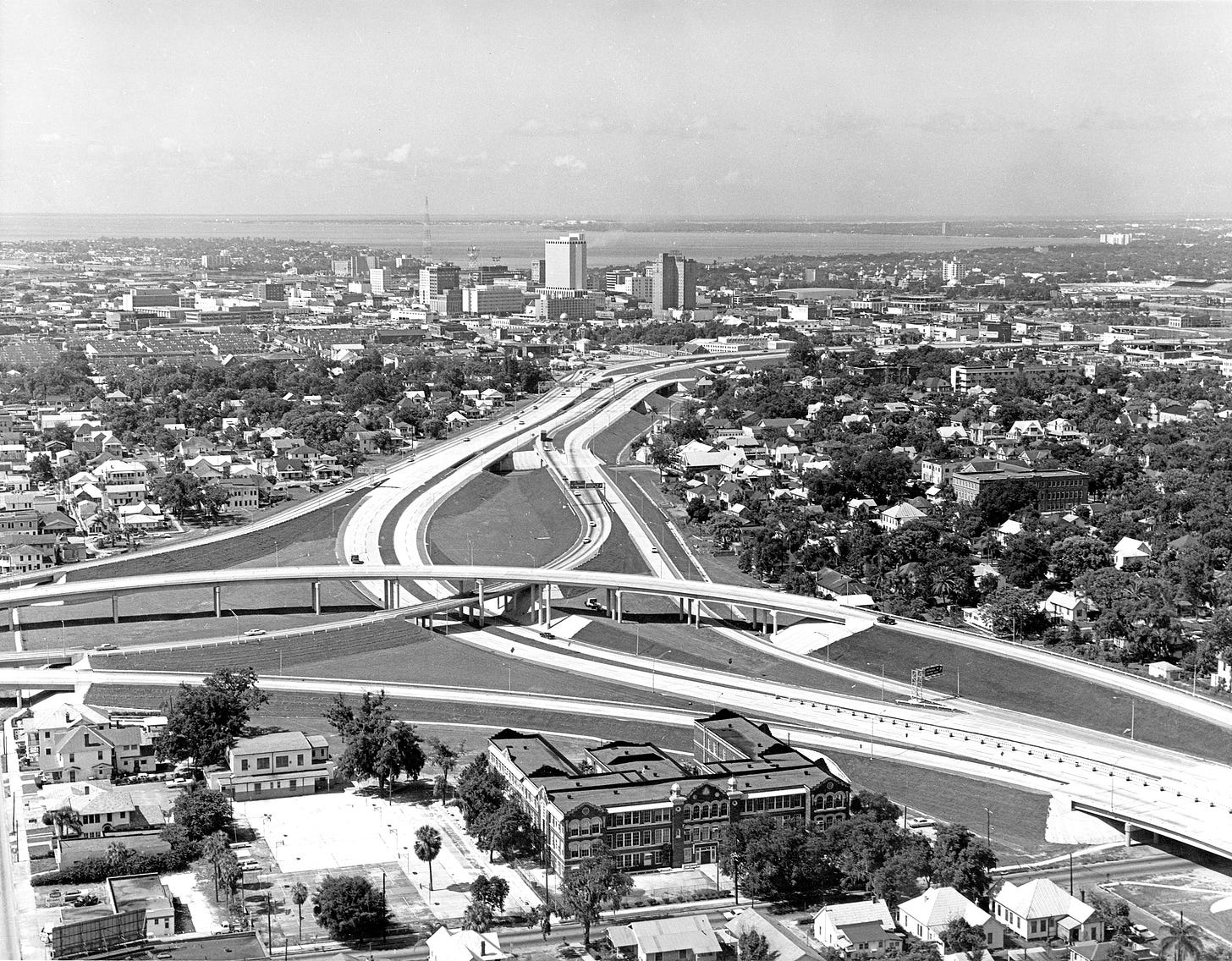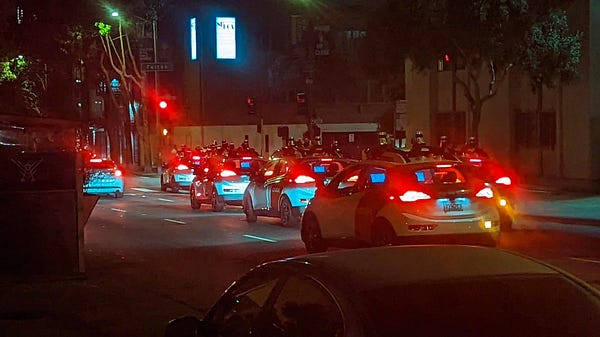Changing Land Use and Transportation in Cities
The USDOT announces $800M for safe streets, and California ends single family zoning
Hello and welcome to the Collective Form Weekly. We share news and research every week on urban design and planning from cities around the world.
→ Visit us at collectiveform.io
Future of Cities
We had a great time at Wharton’s Future of Cities conference at the University of Pennsylvania. The conference featured keynote speakers and panel discussions around the future of transportation planning, the concept of arrested mobility, and the implications of metaverse and AI technology on cities and communities.

Here are a few highlights:
Mike Parker, EY Americas Infrastructure Leader, shared insights on the funding landscape for infrastructure projects along with his thoughts on technology. "Understanding our built environment and how it can be changed and improved is an important problem technology can help to solve."
Eugenie Birch, Co-Director at the Penn Institute for Urban Research, led a great panel on how the battle for climate change and sustainability will be won in cities. “60% of the world’s infrastructure is yet to be built.”
There was much discussion and excitement around smart city technologies - including sensors, reality capture, and AI - to help drivers and autonomous vehicles navigate poorly-designed streets and avoid hitting pedestrians and cyclists. While we love discussing how technology solves many problems in cities, we are weary of creating technological solutions to problems created by technology, especially when a well-conceived design solution is preferable.
Charles T. Brown gave a powerful lecture on arrested mobility, and it had a profound impact on the remaining panel discussions and speeches. How can we redesign our cities to improve walkability and diversify public transportation without ensuring equal representation from everyone in the community?
It was clear to us that throughout the keynotes and panel discussions was a feeling of the growing importance of community engagement for large-scale planning and infrastructure projects. Local governments, private industry, and non-profit community groups are all looking for solutions to a similar problem: how can project teams incorporate community feedback in a meaningful way to ensure that the needs of current and future residents are addressed?

In the News…
Americans continue to leave city centers and move to sprawling cities. (Axios)
How much space should we devote to private vehicles in cities? (Ars Technica)
The U.S. Department of Transportation announced $800 million in grants from the first round of the Safe Streets and Roads for All grant program. (Smart Cities Dive)
The Hillsborough Transportation Planning Organization has decided to abandon their application for grant funding from the Reconnecting Communities Pilot Program - funding that was well-placed to complete a planning study evaluating the possibility of tearing down Interstate 275 north of downtown Tampa and replacing it with a street-level boulevard. (Tampa Bay Times)

The state of California will end single-family zoning for all cities from February 2nd, and Washington state is poised to do the same. (Darrel Owens) (Axios)
Urban rail is on the move in Southeast Asia as Ho Chi Minh City’s first metro line makes a second trial run. (Tuoi Tre News) (Future Southeast Asia $)
Are electric and autonomous vehicles actually solving problems for urban residents or just automakers? Urbanists and technologists continue to debate, and David Zipper summarizes it well in this Twitter thread.


Cities around the world are fighting urban sprawl, and that includes Japan - one of the world’s most rapidly aging countries. (The Japan Times)
President Biden recently hosted city leaders at the annual US Conference of Mayors as was neatly summarized by The Urbanist podcast.
Present With Insite
Insite is a collaborative GIS tool for publishing project information and collaborating with citizens. We’ve designed it to be used for urban planning and mobility studies that seek to diversify transportation options and encourage more transit-oriented and mixed-use development in urban areas.
🗺️ Create interactive maps
🌐 Publish project information online
🙋♀️ Collaborate with citizens
→ Learn more at collectiveform.io






